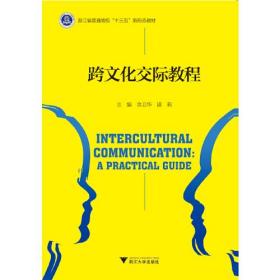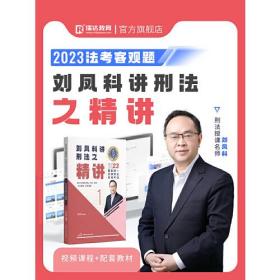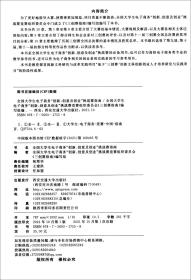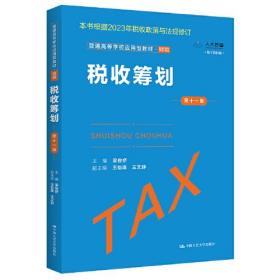
跨文化交际教程
正版二手书,图片套装的图书是其中一本,购买前请联系客服
¥ 12.69 2.5折 ¥ 50 八五品
库存26件
山东济南
认证卖家担保交易快速发货售后保障
作者余卫华 编者;谌莉
出版社浙江大学出版社
出版时间2019-02
版次1
装帧其他
货号9787308181778
上书时间2024-06-16
- 在售商品 暂无
- 平均发货时间 8小时
- 好评率 暂无
- 最新上架
商品详情
- 品相描述:八五品
图书标准信息
- 作者 余卫华 编者;谌莉
- 出版社 浙江大学出版社
- 出版时间 2019-02
- 版次 1
- ISBN 9787308181778
- 定价 50.00元
- 装帧 其他
- 开本 大32开
- 纸张 胶版纸
- 【目录】
-
Chapter 1 Brief Introduction to Intercultural Communication
1.1 Culture as Intercultural Communication
1.1.1 Two Types of Culture
1.1.2 Five Dimensions of Culture
1.1.3 Characteristics of Culture
1.1.4 Definition of Intercultural Communication
1.2 Approaches to Intercultural Communication
1.2.1 Five Elements in Communication Process
1.2.2 Tips on How to Communicate Effectively
Chapter 2 Verbal and Nonverbal Communication
2.1 Introduction to Verbal Communication
2.1.1 Role of Language in Verbal Communication
2.1.2 Receptive and Productive Language Skills
2.1.3 Need for Using Bias-free Language
2.1.4 Types of Verbal Communication
2.2 Introduction to Nonverbal Communication
2.2.1 Definition of Nonverbal Communication
2.2.2 Major Types and Main Features of Nonverbal Communication
2.3 Major Functions of Nonverbal Communication
2.3.1 Nonverbal Communication Conveys Meaning
2.3.2 Nonverbal Communication Regulates Conversational Flow
2.3.3 Nonverbal Communication Affects Relationships
2.3.4 Nonverbal Communication Expresses Our Identities
2.4 Deception and Nonverbal Communication Competence
2.4.1 Concept and Misinterpretation of Deception
2.4.2 Deception Detecting Abilities and Bias
2.4.3 Misconception of Nonverbal Leakage
2.4.4 Typical Giveaway Signs of Deception
2.5 Getting Competent
2.5.1 Guidelines to Improve Nonverbal Competence
2.5.2 Applicable Advices in Specific Channels
Complementary 1 : Scripts of Julian Treasure's TED Lecture---How to Speak So that People Want to Listen
Complementary 2: Scripts of Amy Cuddy's TED Lecture--Your Body Language May Shape Who You Are
Chapter 3 Communicative Competence and Intercultural Communication Competence
3.1 Communicating Under Different Cultural Contexts
3.1.1 Differences in Greetings
3.1.2 Differences in Approval and Disapproval Movements
Complementary: Signs Not to Use Casually Abroad
3.2 From Communicative Competence to Intercultural Communication Competence
3.2.1 Framework for Communicative Competence
3.2.2 Concept of Communicative Competence
3.2.3 Concept of Transcultural Competence
3.2.4 Skills of Multilingual Communicators
3.2.5 Components of Intercultural Communication Competence
3.3 Case Study: Cultural Clashes in Japanese Story
3.4 A Recipe for Successful Intercultural Communication
3.4.1 A Heart Set
3.4.2 A Mindset
3.4.3 A Skill Set
3.4.4 Other Practical Approaches
3.5 Culture Shock
3.5.1 Five Phases of Culture Shock
3.5.2 Reverse Culture Shock
3.5.3 Outcomes of the Adjustment Phase
3.5.4 Transition Shock
Chapter 4 Stereotype and Prejudice
4.1 Stereotype and Prejudice: American Party
4.1.1 Definition of Stereotype
4.1.2 Types of Stereotype
4.1.3 Definition of Prejudice
4.1.4 Ways to Reduce Stereotypes and Prejudices
4.2 Gender Stereotype: Perfect Women
4.2.1 Definition of Gender Stereotype
4.2.2 Four Basic Kinds of Gender Stereotype
4.2.3 Stereotype Threat
4.2.4 Impact of Female Stereotype in Ancient China
4.2.5 Impact of Female Stereotype in Modern China
4.2.6 Tips for Reducing Gender Stereotype
4.3 Classism: The Poor vs. the Rich
4.3.1 Definition and Nature of Prejudice
4.3.2 Definition of Classism
4.3.3 Causes for Prejudice
4.4 Ethnic Prejudice: African Americans
4.4.1 Definition of Ethnic Group
4.4.2 Definition of Ethnic Prejudice
4.4.3 Effects of Prejudice
4.4.4 Strategies for Reducing Ethnic Prejudice
Chapter 5 Chinese Culture
5.1 Yellow Civilization: The Loess Plateau
5.1.1 The Loess and the Loess Plateau
5.1.2 Agricultural Civilization and Ethnic Integration
5.1.3 Mellow Civilization and National Spirit
5.2 Spiritual Origin: Confucianism
5.2.1 Confucianism, Confucius, and Confucian Classics
5.2.2 Confucianism in the East
5.2.3 Confucianism in the West
5.3 Chinese Education
5.3.1 Confucian Education
5.3.2 Chinese School System: 1922-1932
5.3.3 Higher Education Reform After the "Cultural Revolution"
5.4 Yuanming Yuan
5.4.1 Construction of Yuanming Yuan
5.4.2 Destruction ofYuanming Yuan
5.4.3 Mourn for Yuanming Yuan
5.5 Chinese Festivals
5.5.1 Spring Festival
5.5.2 Lantern Festival
5.5.3 Qingming Festival
5.5.4 Dragon Boat Festival
5.5.5 Double Seventh Festival
5.5.6 Mid-autumn Festival
5.5.7 Double Ninth Festival
5.5.8 Winter Solstice Festival
5.6 Chinese Cuisine
5.6.1 Chinese Regional Cuisines
5.6.2 Types of Chinese Cuisines
5.6.3 Relation to Chinese Art
5.7 Chinese Costume--Qipao
5.7.1 History
5.7.2 Origin
5.7.3 Variation Through History
Chapter 6 Western Culture
6.1 Blue Civilization: Ancient Greece
6.1.1 Cradle of Blue Civilization
6.1.2 History of Ancient Greece
6.1.3 Legacies of Ancient Greece
6.2 Religious Origin: Christianity
6.2.1 Birth of Christianity
6.2.2 Spread and Triumph of Christianity
6.2.3 Impacts of Christianity
6.3 American Education
6.3.1 American Educational History
6.3.2 American Educational System
6.3.3 American Educational Hallmarks
6.4 Chateau de Versailles
6.4.1 Western Garden Art Before Chateau de Versailles
6.4.2 History of Chateau de Versailles
6.4.3 Layout and Features of Chateau de Versailles
6.5 Western Festival---Christmas
6.5.1 Customs and Traditions
6.5.2 Decorations
6.5.3 Traditional Cuisine
6.5.4 Cards
6.5.5 Gift Giving
6.6 Western Cuisine
6.6.1 Traditional Cuisine
6.6.2 American Cuisine
6.7 Western Costume--Scottish Kilt
6.7.1 History
6.7.2 Design and Construction
6.7.3 Fabrics
6.7.4 Setts
6.7.5 Accessories
6.7.6 Contemporary Designs
Chapter 7 Globalization
7.1 Overview of Globalization
7.1.1 Definition of Globalization
7.1.2 Three-tiered Conception of Globalization
7.2 Economic Globalization
7.2.1 Definition of Economic Globalization
7.2.2 Effects of Economic Globalization
7.3 Political Globalization
7.3.1 Definition of Political Globalization
7.3.2 Impact of Political Globalization
7.4 Cultural Globalization
7.4.1 Definition of Cultural Globalization
7.4.2 Two Perspectives of Cultural Globalization
7.4.3 Impact of Cultural Globalization
7.5 Anti-globalization Movement
7.5.1 Definition of Anti-globalization Movement
7.5.2 Reasons of Anti-globalization Movement
7.5.3 Influence of Anti-globalization Movement
Chapter 8 Social Identity
8.1 Sports Group: Basketball Game
8.1.1 Definition of Social Identity
8.1.2 Definition of Self-concept
8.1.3 Definition of Self-esteem
8.1.4 Henry Tajfel and His Social Identity Theory
8.1.5 An Example of Social Identity
8.2 Nerdy Guy: Sheldon Cooper
8.2.1 Definition of Self-esteem
8.2.2 Tajfel and His Minimal Group Study
8.2.3 Definition of Positive Distinctiveness
8.2.4 Strategies to Achieve Positive Distinctiveness
8.3 Intergroup Behavior: Immigrants to the US
8.3.1 Interpersonal Behavior and Intergroup Behavior
8.3.2 Definition of Intergroup Conflict
8.3.3 Realistic Conflict Theory
8.3.4 Definition Of Superordinate Goals
8.3.5 Muzafer Sherifand His Robbers Cave Experiment
8.4 Social Identity and Social Comparison
8.4.1 Definition of Social Group
8.4.2 Definition of Intergroup Behavior
8.4.3 Understanding of Social Identity
8.4.4 Variables Influencing Intergroup Differentiation
8.4.5 Social and Instrumental/Realistic Competition
Chapter 9 Global Citizenship
9.1 Global Citizenship
9.1.1 Definition of Global Citizenship
9.1.2 Origin of Global Citizenship
9.1.3 Global Citizenship in Other Context
9.1.4 Concept of"Glocalization"
9.2 Global Citizenship Education
9.2.1 Definition of Global Citizenship Education
9.2.2 Common Perspectives on GCE
9.2.3 Pedagogical Features of GCE
9.3 Themes, Outlooks, and Skills for Global Citizenship
9.3.1 Core Themes of Global Citizenship
9.3.2 Outlooks of Global Citizenship
9.3.3 Skills Needed for Global Citizenship
Main References
Appendices
点击展开
点击收起
— 没有更多了 —












以下为对购买帮助不大的评价